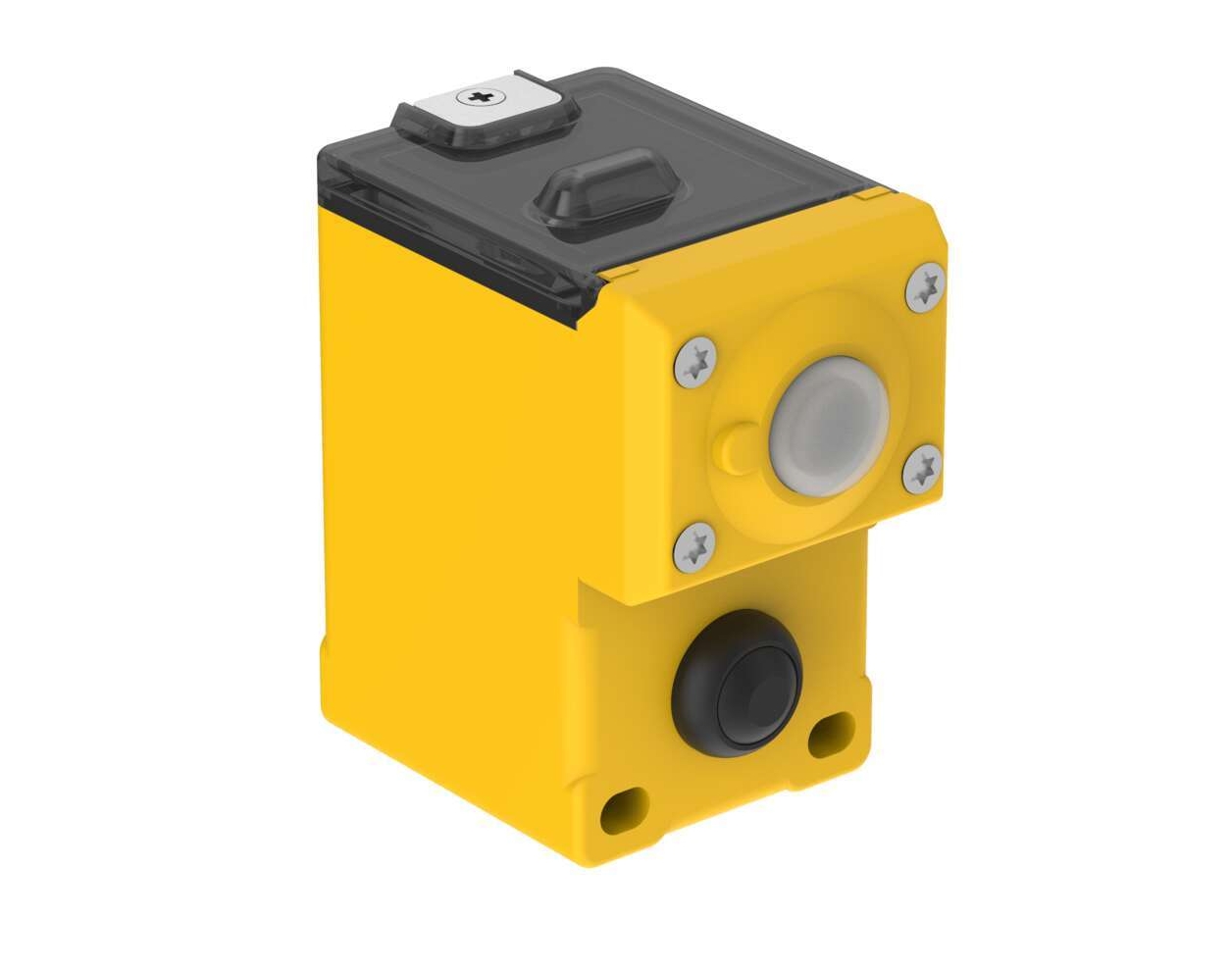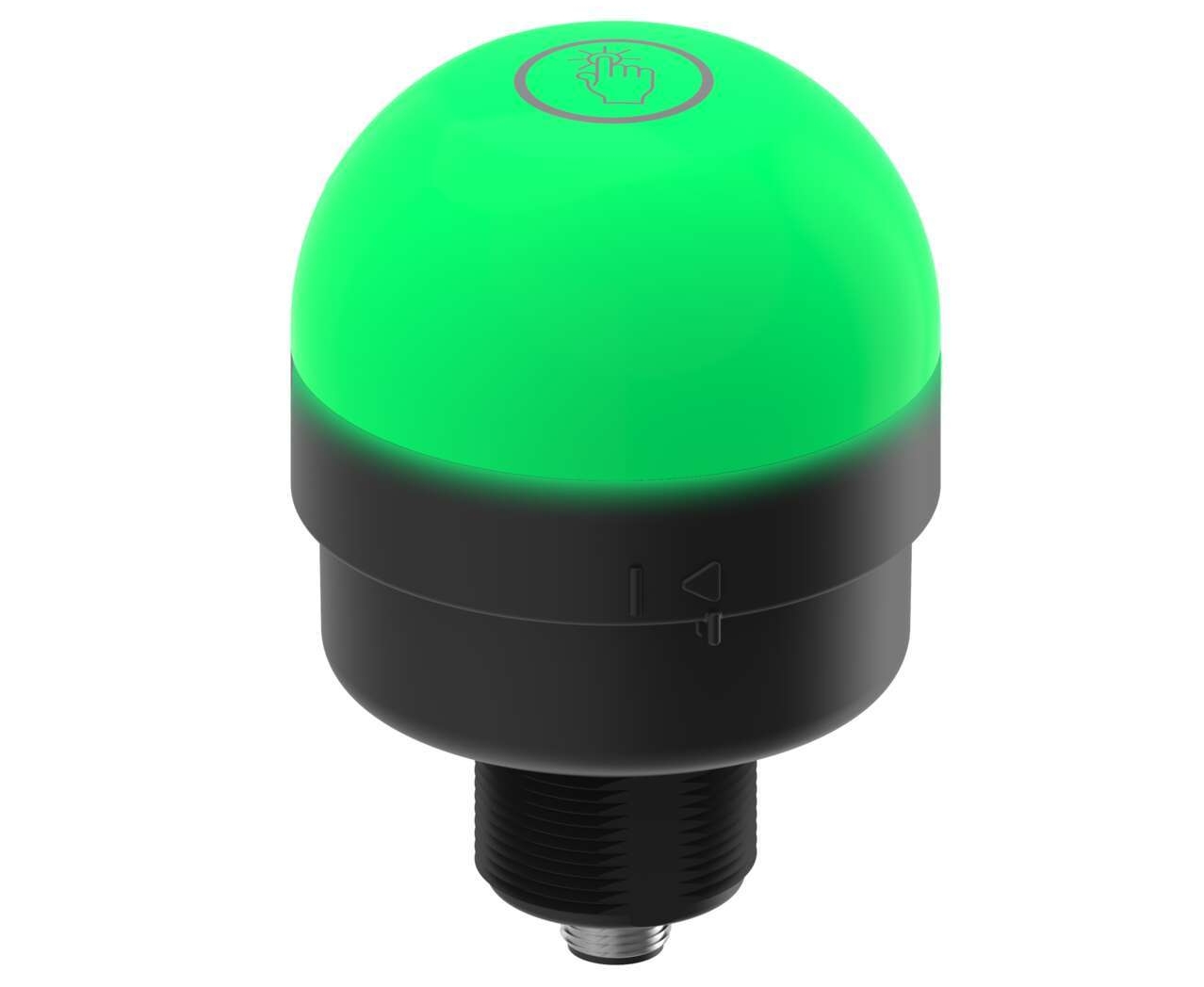Factory Communication and Process Optimization
Communicate Better, Improve Worker Productivity
Industrial Internet of Things (IIoT) technologies are not just useful for optimizing machines. In fact, wireless technologies enable seamless interaction among human workers as well, and can have a significant impact on the efficiency of manual or semi-automated production and assembly lines.
Keep reading to learn how IIoT technologies enable better communication throughout the factory and streamline processes for machines and people alike.
Combining wireless communication with bright indication enables more seamless interaction between machines, workers, mobile equipment, and their managers throughout the factory.
Workers can quickly and easily interpret signals from LED indicators with clear, bright local displays, especially when each status is represented by a unique color or animation.
Furthermore, LED indicators with wireless communication make it easy to quickly send and receive these signals from anywhere in the factory--and respond in a timely manner.
Keep Stations Stocked for Continuous Workflow
Assembly workers need the correct supplies in order to build products and maintain a smooth workflow. Restocking assembly stations on-time, before components run out without overstocking and creating congestion at a station can be a challenge. Real-time communication between assemblers and the forklift operators who stock their stations enables a more efficient delivery of components as well as the timely removal of completed products.
When an assembly station needs to be restocked, a worker can simply touch a button at their station. The button sends a signal to a pendant that the forklift operator carries. A red LED light on the pendant that corresponds with the assembly station will begin to flash, notifying the forklift operator where parts are needed. The driver can quickly acknowldege the request by pushing a button on the pendant, letting the operator know more material is on the way.
Use Data to Identify Process Improvements
A wireless call-for-parts, service, or pallet pickup system increases efficiency by allowing up to 18 work stations to call out to six forklifts or Hi-Los. A wireless solution enables quicker responses from forklift drivers and/or supervisors to indicate a request has been accepted. When creating a call system using wireless indicators, work stations can maintain a steady workflow and resolve critical issues quickly.
A wireless solution can also track total time to fulfill requests, number of requests, and time to acknowledge requests. This allows managers to analyze average delivery and acknowledgement times for each station and make process improvements as needed.
Reduce Time Spent Checking In Unnecessarily
Instead of requiring machine operators to walk over to the manager area for assistance with a technical issue, a wireless system utilizing connected pushbuttons or switches and tower lights can be used to alert managers when assistance is needed on the line.
For example, a notification system might be set up so that an operator pushes a button or flips a switch to alert the manager or technician that he or she is needed on the production line. Wireless pushbuttons equipped with LED status lights can also facilitate 2-way communication by configuring the LED to change color when the manager or technician indicates that he or she is on their way.
Using a wireless notification system reduces the need for technicians and managers to constantly check each production line and for workers to leave their workstations when they need assistance. By streamlining communications, managers, technicians, and line workers are able to use their time more productively.
Wireless Pushbuttons and Switches
Les boutons et commutateurs Sure Cross® Q45 sont conçus pour accepter les entrées de commutation distante sans contact logiques, NAMUR et à contact sec. Ils sont adaptés à de nombreuses applications d'automatisation industrielle, de télésurveillance et de l'Internet industriel des objets (IIoT).
- Les modèles distants sont conçus pour l'interfaçage avec des entrées à contact sec isolé ou des capteurs inductifs de proximité.
- Les modèles de boutons et de voyants possèdent des entrées de bouton contrôlées de façon indépendante et un voyant d'indication à LED multicolore.
- Les modèles de commutateurs sans contact logique distants utilisent un commutateur Reed et un aimant pour détecter la position de dispositifs mécaniques comme les portes, les levier, les vannes et d'autres actionneurs.
Wireless Button and Light Pendant
Le module à boutons et voyants sans fil Q120 Sure Cross® est un nœud sans fil autonome qui permet une communication bidirectionnelle entre un opérateur et jusqu'à 6 dispositifs distants et/ou mobiles.
- Six entrées de bouton contrôlées de façon indépendante permettent aux opérateurs d'envoyer des mises à jour d'état et des accusés de réception, d'initier des processus et d'actionner des dispositifs via une connexion sans fil.
- 6 LED d'indication rouges et vertes signalent l'état des équipements et dispositifs distants ou mobiles.
- Configuration via des interrupteurs DIP
Wireless LED Touch Button
Le bouton tactile K70 de 70 mm est un gros interrupteur transistorisé facile à activer, doté d'un voyant très visible. Les boutons tactiles de cette série conviennent parfaitement à l'aide au choix, à l'appel de pièces et à des applications industrielles générales.
- Excellente résistance aux faux déclenchements par jet d'eau, détergents, huiles et autres corps étrangers
- Système de contrôle de conception ergonomique pour éliminer les tensions de la main, du poignet et du bras dues aux actions répétitives ; aucune force physique n’est nécessaire pour les actionner
- Actionnement à mains nues ou avec des gants
- Disponibles en neuf couleurs et en modèles combinant une, deux ou trois couleurs
- Fonctionnement sous 12 à 30 Vcc













